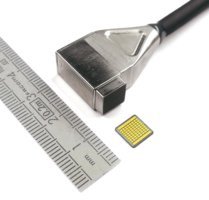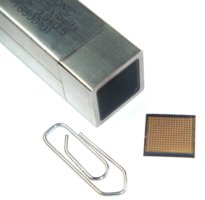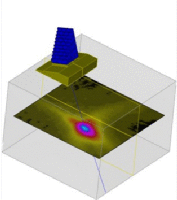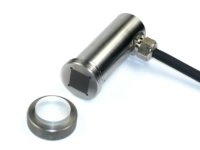 Example of 5MHz 8x8ch 5x6mm matrix array probe
Example of 5MHz 8x8ch 5x6mm matrix array probe
 Example of 5MHz 16x16ch 10x10mm matrix array probe
Example of 5MHz 16x16ch 10x10mm matrix array probe
 Example of 5MHz 8x8ch 5x6mm matrix array probe
Example of 5MHz 8x8ch 5x6mm matrix array probe
 Example of 5MHz 16x16ch 10x10mm matrix array probe
Example of 5MHz 16x16ch 10x10mm matrix array probe
Matrix or 2D array transducers allow 3D beam focusing and scanning, thus opening up new possibilities

|
Freq. (MHz)
|
Elementary active size (mm)
|
Total active size (mm)
|
Number of elements
|
|
2
|
1.2 x 1.2
|
10 x 10
|
8 x 8 = 64
|
|
2
|
1.2 x 1.2
|
13 x 13 |
11 x 11 = 121
|
|
5
|
0.6 x 0.6
|
5 x 5
|
8 x 8 = 64
|
|
5
|
0.6 x 0.6
|
7 x 7
|
11 x 11 = 121
|
|
5
|
0.6 x 0.6
|
10 x 10
|
16 x 16 = 256
|
|
10
|
0.3 x 0.3
|
5 x 5
|
16 x 16 = 256
|

 Example of matrix array probe with screw-in delay line
Example of matrix array probe with screw-in delay line